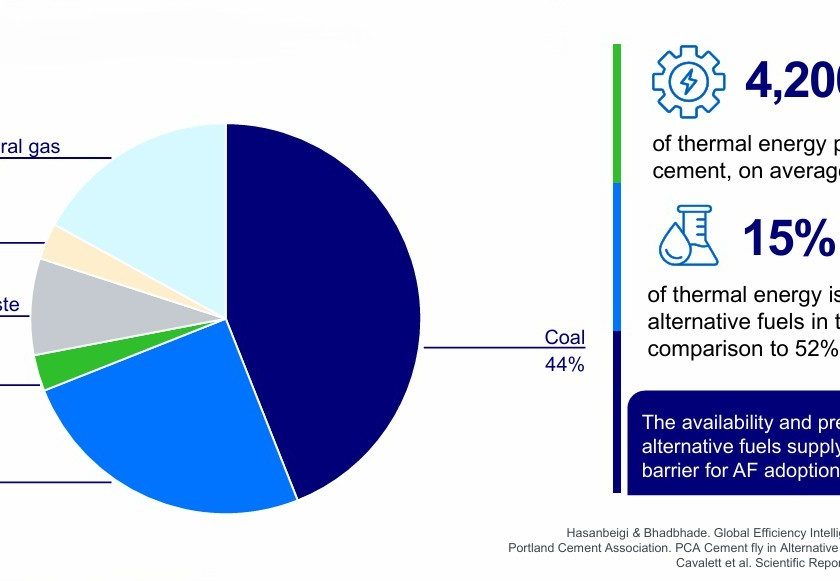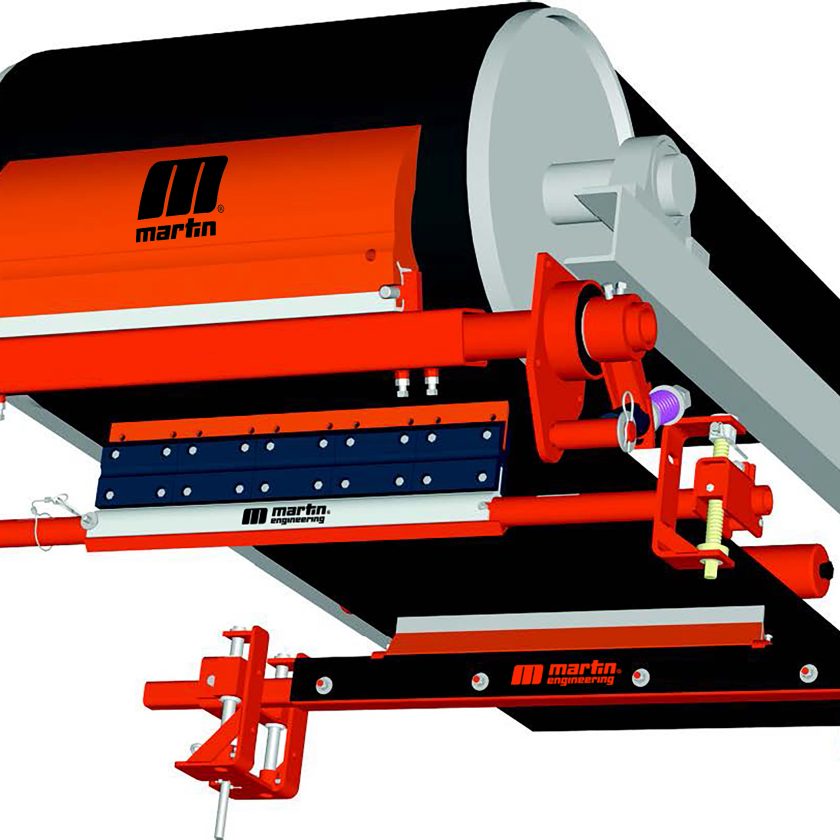Using Wear-Resistant Rotary And Diverter Valves To Help The Cement Industry Meet Requirements For Handling Abrasive Materials.
By Keith Kressley, Gary Werth and Frank Speck
In order to help the cement industry meet the special requirements for handling abrasive materials, Coperion has developed the DuroProtect group of rotary and diverter valves. Components with the DuroProtect option enable Coperion to reliably convey all powder bulk materials in a cement plant, including raw meal, by-pass dust, clinker, cement, fly ash, petcoke, lignite and plastic fluff. The blow-through rotary valve ZXQ, for example, is designed to achieve conveying capacities of over 220 tph for bulk materials like cement.
Wear Types and Mechanisms
Extensive testing has shown that erosive wear is the main type of wear in rotary and diverter valves. Material properties such as particle shape, size and hardness are key factors that lead to erosive wear. Based on detailed research, Coperion engineered three wear-protection designs proven to have significant impact on the lifespan of rotary and diverter valves when handling abrasive materials.
 |
| Figure 1: Drop-through rotary valve. |
 |
| Figure 2: Blow-through rotary valve. |
Feeding Technologies in Pneumatic Conveying Systems
Screw pumps and pressure vessels are the traditional feeding technologies used in pneumatic conveying systems in the cement industry. Rotary valves are also a well-known technology for feeding bulk materials into a pneumatic conveying line. In mineral applications, such as the cement industry, the use of rotary valves is limited because they are subject to high wear.
Rotary Valves in General
A rotary valve is a continuous rotating feeding device, which creates a barrier between the non-pressure feeding side and the pressurized conveying line. Rotary valves have a very tight clearance between the housing and the rotor, resulting in very low air leakage. There are two different types of rotary valves available on the market, which are applicable for pneumatic conveying systems. A drop-through rotary valve (Figure 1) can be used for system pressures up to approximately 14.5 psi for grain and powders. For conveying pressures above 14.5 psi and high conveying capacities, it is recommended to use a blow through rotary valve (Figure 2) which has a higher pressure rating, especially for powders, and features better emptying of the rotor pockets.
Wear Locations in A Rotary Valve
 |
| Figure 3: Wear locations on drop-through rotary valve. |
 |
| Figure 4: Blow-through rotary valve wear points. |
A drop-through rotary valve has various potential locations for wear, which can negatively impact the performance of the rotary valve. These wear locations can be seen in Figure 3. The inlet (Location 1) is subject to high wear from the upstream leakage air from the conveying system. Particles destroy the surfaces of the housing and the rotor which leads to an increase of the gap between them (Location 2). In the area between the sealing system and the shaft (Location 3), it is possible for wear to destroy the shaft and/or the sealing system.
In addition to the abovementioned wear locations (Locations 1 to 3) in the drop-through rotary valve, the blow-through rotary valve has an additional wear point which is the blow through channel itself (Location 4). This channel can be worn down by the material being conveyed due to the high conveying velocities at the pick-up point.
Wear Protection In A Rotary Valve
The DuroProtect wear protection concept for rotary valves was developed based on the results of the Coperion wear test facility and other research projects. The Duroprotect wear protection packages incorporate various suitable materials for wear protection and reflect the impact of product hardness (Mohs hardness scale from 1 to 10) and conveying pressure on the wear behavior of the equipment.
 |
| Figure 5: Coperion DuroProtect packages. |
Wear Protection Materials
As shown in Figure 5 the wear tests have shown that the following three wear protection materials are the most suitable protection layers to ensure a long lifetime:
 |
| Figure 6: Tungsten carbide welding. |
 |
| Figure 7: Ceramic housing. |
- Chrome. Chrome layers (DuroChrom) are applied in different thicknesses on the housing bore, end plates and the rotor tips for lower conveying pressures and product hardness.
- Tungsten Carbide. Tungsten Carbide (DuroCarb) is used for the tips of the rotor. Depending on the method of application of the Tungsten Carbide, changes in the matrix structure can result in further considerable improvements in the wear behavior.
- Ceramic. Ceramic (DuroCera) is used inside of the housing bore and on end plates for wear protection at high conveying pressures and hard materials like cement or alumina.
Rotor Design
Both the wear protection material and the rotor design have an impact on the lifetime and wear resistance of the rotary valve. As shown in Figure 8, an open rotor is used for a drop-through rotary valve with lower conveying pressures. With increasing conveying capacity a closed rotor, shown in Figure 9, is used to help prevent the material from contacting the end plates and sealing system. To avoid the material getting stuck between the rotor and the end plates, a seal purge system is required.
 |
| Figure 8: Open end rotor. |
 |
| Figure 9: Closed end rotor. |
Case Studies Of Rotary Valves In The Minerals Industry
Alumina ship unloading with a vacuum suction system
A double station with two Coperion ZPC 800 rotary valves with DuroProtect 5 finish (ceramic in the housing; tungsten carbide on the rotor) was installed in a vacuum ship unloader at an aluminum smelter. The rotary valves run at a capacity of 220 tph at a vacuum of 5.8 psi and discharge alumina (Mohs hardness 9) out of the filter separator. Both rotary valves replaced a belt sealed rotary valve which required maintenance work each time a ship was unloaded. The DuroProtect 5 rotary valves were installed in 2006 and unload 617,297 tons annually without any maintenance. The rotary valves were inspected for the first time in 2013 and only minor wear traces were identified.
ZXQ 600 for lignite conveying
A blow-through rotary valve with a rotor diameter of 25 in. feeds 110 tph of dry lignite into a pneumatic conveying system at a pressure of around 14 psi, transporting the coal from a vertical roller mill to storage silos. To ensure a long lifetime for the equipment DuroProtect 4 (chrome in the housing; tungsten carbide on the rotor) wear protection was chosen. Outstanding characteristics of this rotary valve are:
 |
| Figure 10: Vacuum ship unloader and rotary valve station. |
- No ignition source due to the low rotation velocity of the rotor.
- Energy consumption of 5.4 hp, which is an energy saving of more than 90 percent compared to other feeding systems.
- Simple foundation size and reduced requirement for supporting steel structure due to the low height of the rotary valve.
- Rotary valve tightness is always equal, either under partial or full load, which is especially important in pre-dosed feeding by a mill.
ZRC 500 for fly ash handling
The drop-through rotary valve ZRC 500 is used to convey fly ash in a cement grinding plant at a conveying capacity of 70 tph at around 13 psi. To withstand the wear of the fly ash the rotary valve is executed in DuroProtect 5. The rotor is closed and has tungsten carbide welding and the housing has a special ceramic lining. The previous screw pump had an energy consumption of around 134 hp, which could now be reduced to around 4 hp with the new rotary valve.
 |
| Figure 11: ZXQ 600 for lignite conveying. |
Optimal Design Of A Wear Resistant Diverter Valve For Pneumatic Conveying Systems
Based on experience collected in the development of wear protection for rotary valves, Coperion has also optimized the design of two diverter valves for use in the minerals industry: the one-channel WRK diverter valve and the two-channel WZK diverter valve.
WRK one-channel diverter valve
The WRK design uses the effect of product layer protection inside in the housing. As shown in Figure 13, during operation a layer of product builds up in front of the rotating part, protecting and reducing wear of the gray cast housing of the diverter valve. In addition to minimized maintenance parts and downtime, the WRK has an inspection opening whereby the rotating part of the diverter valve can be replaced very quickly in situ e.g. on a silo.
WZK two-channel diverter valve
 |
| Figure 12: WRK with product layer. |
 |
| Figure 14: WZK two-channel diverter valve. |
The two-way WZK diverter valve is the right solution for very fine and abrasive products and as a collection valve. The pipe inserts are available in different wear protection options such as hardened pipes or tungsten carbide welded inserts, in order to provide the right protection for different bulk materials, based on product hardness and conveying pressures.
Conclusion
Intensive research and experience have shown that abrasive bulk materials can cause significant wear in equipment in pneumatic conveying systems for the minerals industry. In order to ensure proper function of components such as rotary and diverter valves under these conditions, specialized wear protection options are necessary. This wear protection concept allows rotary valves to be an energy-efficient and low maintenance alternative solution for the cement industry.
Keith Kressley, Gary Werth and Frank Speck work for Coperion, www.coperion.com, [email protected]. Coperion is a manufacturer of bulk material-handling systems, related services and material-handling components such as rotary or diverter valves for the mineral, chemical, plastics, food and pharmaceutical industries.




